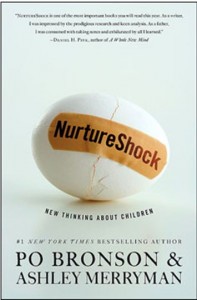Here is the link to the interview Robert Morris conducted with Ric Merrifield.
And here is the excerpt on that page:
Merrifield spent nearly 15 years in various consulting roles helping organizations define and achieve their goals. Since joining Microsoft, Merrifield has spent more than 10,000 hours as a business architect and has filed twelve patent applications, all of which share the same goal: to help companies rethink their operating models and get out of the “how” trap described in the pages of his book, Rethink: A Business Manifesto for Cutting Costs and Boosting Innovation. Merrifield is also a co-author of The Next Revolution in Productivity, an article that appeared in the June 2008 issue of Harvard Business Review, which focuses on case studies that highlight needs of the organization and the opportunity to rethink business operating models before making major technology changes. Merrifield is an alumnus of Lakeside School in Seattle and Georgetown University in Washington, D.C.
Here is an excerpt from my interview of Merrifield. The complete interview is also available.
Morris: Most change initiatives fail and several fail because of cultural barriers that could not be overcome. James O’Toole suggests they are the result of “the ideology of comfort and the tyranny of custom.” In your opinion, what are the best strategies and tactics to overcome such barriers?
Merrifield: It wasn’t so long ago that I did a blog entry on this out at the rethinkbook.com site where I offered thoughts for intrapreneurs. Too often people think that just having a great idea is enough. Culture always plays a factor, and especially in bigger companies people tend to take fewer risks, and change is always hard. So beyond needing to flesh out the idea and really think through the business implications, here are my thoughts on what else initiatives need to succeed:
1) Sponsorship. There will always be someone who thinks your idea isn’t good or shouldn’t be a priority. And then there will be people who say they like the idea, but won’t do anything to help you move it forward. Getting someone more powerful than you are to protect you from the naysayers, but also champion the idea is critical
2) Evidence. Anyone can put together some PowerPoint slides with projections and forecast of just how successful an idea is, there has to be evidence that the idea has merit and that customers will want it.
3) Budget. When you go to someone for support of the idea, make sure they control funds that would be needed to advance the idea. The idea has to get the support of someone who can pay for it.
4) Timing. Last year Microsoft didn’t release much in the way of core products, so it was a great time for ideas about how to do different things with those products, and that’s what people talked about at the conferences we do. This year, every major product is getting a new release, so there’s only room to talk about the basics of who needs them and how to install and integrate them. Most companies have some sort of cycle like that. Since so much of its business is around the holidays, I would guess that December is a particularly bad time to promote a new idea at amazon.com. Timing is like the weather, it’s often a factor and there’s not a lot you can do about it (though with an idea, you can wait for a better time, or collect more evidence or support, or funding, or something).
5) A Thick Skin. As much as we would love everyone to slap their forehead and say, “why didn’t I think of that?!” it doesn’t usually work that way, and you just have to keep pushing. It took over two years for the Harvard Business Review to get that this incredibly simple concept is a new and important idea. Some of that was that I was not good at describing it, but it also took time for them to get it.
* * *






